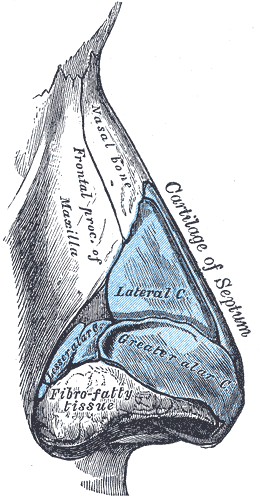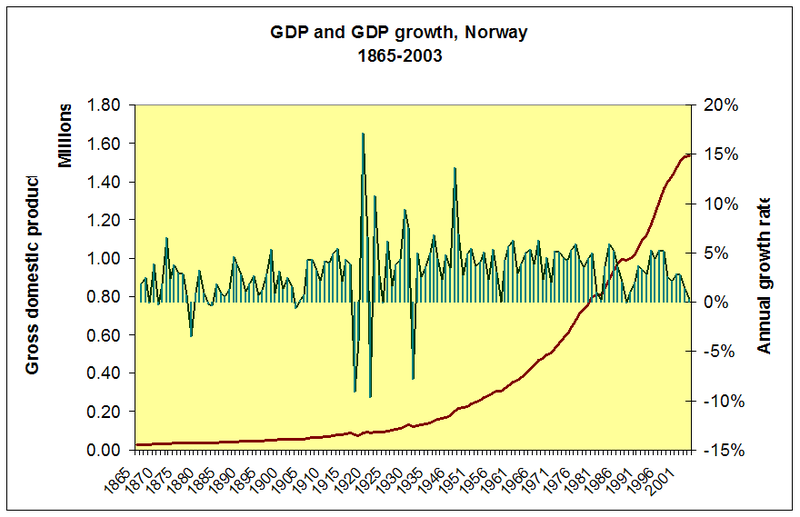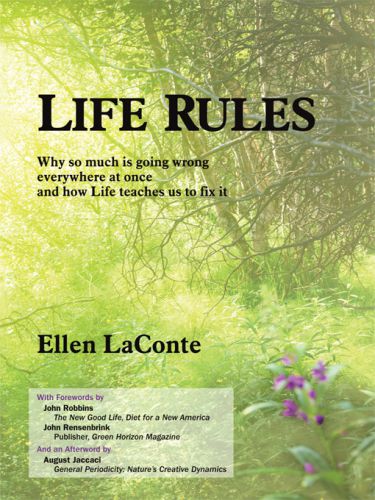Wednesday, September 28, 2011
Tuesday, September 27, 2011
"Nese" for god arkitektur?
Ny forskning viser at hjernen automatisk rangerer lukter etter behag og ubehag, og at denne rangeringen er lik for alle mennesker. Christopher Alexander mener vi har den samme egenskapen i møte med god og dårlig arkitektur, og at "velluktende" og "illeluktende" arkitektur rangeres likt av alle mennesker, vel å merke som ikke har fått "sløvet" sansene av modernistisk propaganda. Dette basert på våre nedarvede neurale instinkter, eller overlevelsesinnstinkter. Når alt kommer til alt er vi evolvert ut av naturen. Det er dette The Phenomenon of Life, av Christopher Alexander, omhandler. Ei bok vel verdt å lese!
We assumed from the beginning that everything was based on the real nature of human feeling and - this is the unusual part - that human feeling is mostly the same…. in every person…[T]he pattern language is …a record of that stuff in us which belongs to the ninety percent of our feeling, where our feelings are all the same. - Christopher Alexander
Les artikkelen fra Science Daily: Scientists Discover an Organizing Principle for Our Sense of Smell Based On Pleasantness.
Monday, September 26, 2011
Great Essay Showing the Stupidity of Measuring Success in GDP
Excerpted on P2P-Foundation here.
Related:
Human Scale for Human Space (and some great examples from history)
Scale is fundamental to urban design. If you get it right, and achieve a well-proportioned space between buildings, you have a sound basis to build upon. Even if the architecture is far from perfect, the public realm you create can be decent and comfortable. If you get the scale wrong and your master plan is built, even the most lustrous architecture won’t remediate the failure of space-making; people might still use it for utilitarian reasons (think the parking lot of a Wal-Mart), but will not enjoy it. - Galina Tachieva
 |
| Mostar - Old Town panorama. The picture was taken from the minaret of Koski Mehmed Pasha Mosque, which is just opposite Stari Most ("The Old Bridge") looking on the same part of the Neretva river. Please click on the picture! Photo: Ramirez |
 |
| Tallinn old town model. Surely this is a generated structure, like ALL sustainable environments, manmade or nature made. Photo: Jennifer Boyer |
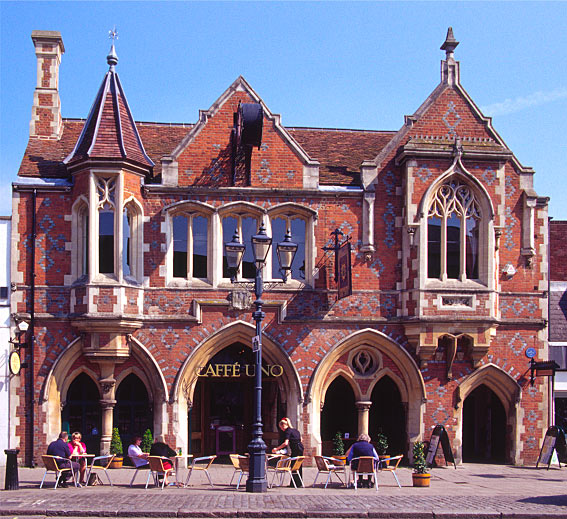 |
| Old Town Hall of Berkhamsted. Photo: Robert Stainforth |
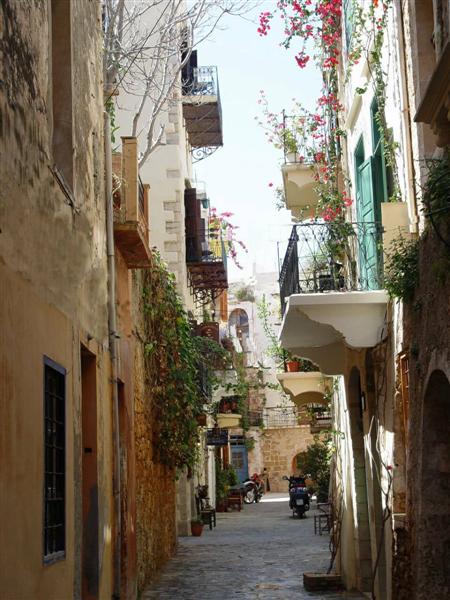 |
| Old town of Chania. Photo: Jose Concalves |
 |
| Main entry of the town hall of Sanlúcar de Barrameda, Cádiz, Spain. Ancient palace of the dukes of Montpensier, 19th century. Photo: Hispalois |
Sunday, September 25, 2011
Dangerously Addictive: Why We Are Biologically Ill-Suited to the Riches of the Modern World
But living now in relative abundance, when the whole world is a shopping mall and our appetites are no longer constrained by limited resources, our craving for reward--be that for money, the fat and sugar of fast food, or for the novel gadgetry of modern technology--has become a liability and a hunger that has no bounds. Our nature has no built-in braking system. More is never enough. - Peter C. Whybrow
Read the whole chapter from The Post Carbon Reader (pdf): Dangerously Addictive: Why We Are Biologically Ill-Suited to the Riches of Modern America.
Related:
 |
| Plaza Blok M. Mall in Jakarta, Indonesia. Photo: Jonathan McIntosh |
Read the whole chapter from The Post Carbon Reader (pdf): Dangerously Addictive: Why We Are Biologically Ill-Suited to the Riches of Modern America.
Related:
Saturday, September 24, 2011
Vi Alexandrinere
Friday, September 23, 2011
The Right to the City
We live in an era when ideals of human rights have moved centre stage both politically and ethically. A great deal of energy is expended in promoting their significance for the construction of a better world. But for the most part the concepts circulating do not fundamentally challenge hegemonic liberal and neoliberal market logics, or the dominant modes of legality and state action. We live, after all, in a world in which the rights of private property and the profit rate trump all other notions of rights. I here want to explore another type of human right, that of the right to the city.
The question of what kind of city we want cannot be divorced from that of what kind of social ties, relationship to nature, lifestyles, technologies and aesthetic values we desire. The right to the city is far more than the individual liberty to access urban resources: it is a right to change ourselves by changing the city. It is, moreover, a common rather than an individual right since this transformation inevitably depends upon the exercise of a collective power to reshape the processes of urbanization. The freedom to make and remake our cities and ourselves is, I want to argue, one of the most precious yet most neglected of our human rights. - David HarveyAlthough I'm not an ideologist, in fact I consider myself a fractalist relying on the wisdom of nature and the universe, I find the following essay I found today from New Left Review on the P2P-blog, highly useful. Read the rest of the essay by David Harvey: The Right to the City.
 |
| The west side of Manhattan, New York |
Thursday, September 22, 2011
Harmony: A New Way of Looking at Our World
Tracing this golden thread of wisdom and the inner need to maintain harmony in the world and within ourselves demonstrates how beautifully this principle has been woven into the fabric of Western civilization. Clearly the idea is not some wishy-washy, New Age invention of the late twentieth century. Far from it. It is a very precise priniple indeed acknowledged as central by some of the greatest thinkers the world has ever seen. From Pythagoras and Plato to Shakespeare and Ficino, from Giorgione, Bach and Handel to Wordsworth, Poussin and Blake, all of these great artists were very clear that there is a harmony to the world that must be maintained.
- Prince Charles of Wales, from his new book Harmony: A New Way of Looking at Our World
- Prince Charles of Wales, from his new book Harmony: A New Way of Looking at Our World
Wednesday, September 21, 2011
Naturen kan ikke måles i kilowatt-timer
Flott leserbrev fra Forum for natur og friluftsliv i Oppland!
Hensynet til biologisk mangfold, livet i og rundt elvene har måttet vike for et stadig økende kraftbehov. I dag er to tredeler av våre største vassdrag regulert, sju av de ti høyeste fossene er lagt i rør, 21 av de 25 største innsjøene er regulerte og 130 av de 200 største vassdragene utbygd.Les hele innlegget her.
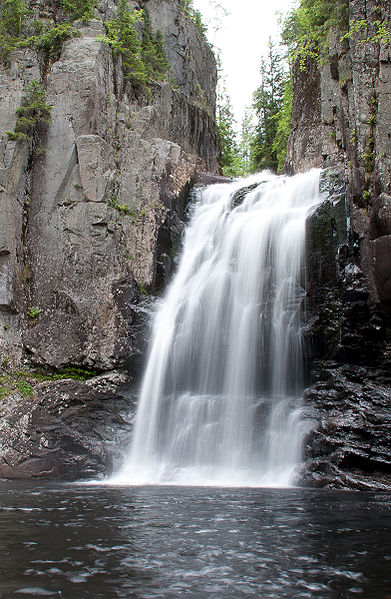 |
| Trollfoss i Lardal kommune. Foto: EsP72 |
Tuesday, September 20, 2011
Paralyzed by Too Many Damn Choices
Renata Salecl: The Paradox of Choice (Animated). From the RSA.
I recently moved into a new house and had to choose from a list of about 30 energy suppliers. Who has time and motivation to go through such a list to find the best supplier for you? To make it simple I just asked my father which supplier he used, and picked the same one.
Monday, September 19, 2011
Livet regjerer
Fra dagens utgave av P2P Foundation:
This week we are presenting the book “Life Rules. Why so much is going wrong everywhere at once and how Life teaches us to fix it” by Ellen LaConte.
According to David Braden, Ellen discusses 9 aspects of “Life’s /Eco/nomic Survival Protocol” that continuously puts life into upward spiral in spite of the geologic history of crises that life has faced. Her analysis is insightful and fascinating.
In this first part, we reproduce a short interview with the author by Robert Jensen:
Les intervjuet her.
This week we are presenting the book “Life Rules. Why so much is going wrong everywhere at once and how Life teaches us to fix it” by Ellen LaConte.
According to David Braden, Ellen discusses 9 aspects of “Life’s /Eco/nomic Survival Protocol” that continuously puts life into upward spiral in spite of the geologic history of crises that life has faced. Her analysis is insightful and fascinating.
In this first part, we reproduce a short interview with the author by Robert Jensen:
Les intervjuet her.
Saturday, September 17, 2011
Uten jobb og fri, er dette mulig?
Ja, ifølge Douglas Rushkoff er det det. Les hans artikkel i CNN: Are jobs obsolete?
 |
| Kan vi igjen fri oss fra arbeidets lenker? |
Friday, September 16, 2011
The Wealth of Nature (book) & Adam Smith Got it Way, Way Wrong!
 |
I love the way John Michael Greer’s latest book, The Wealth of Nature, opens, with a good skewering of the premise on which the modern pseudo-science of economics depends. Exposing 18th century philosopher Adam Smith’s thinking in The Wealth of Nations as flawed, Greer goes on to explain what Smith missed, why it’s important, and how we can turn the error in history around. - Lindsay Curren
Read the article: Adam Smith got it way, way wrong!
Thursday, September 15, 2011
Hellige arbeidskirker?
Jeg er så inderlig lei av moderne arbeidskirker!
Før arkitektene bygger flere arbeidskirker bør de nok arbeide litt med seg selv. Fysikken, matematikken og biologien har talt, det er intet mindre enn Guds egen stemme vi hører!
 |
| Hvorfor kan ikke kirkearkitektene innse at dette |
 |
| nødvendigvis må lede til dette? |
Trær, en viktig del av klodens kjølesystem
 |
| Foto: Samuli Lintula |
Ikke nok med at trær binder store mengder CO2, de bidrar også betydelig til å kjøle ned atmosfæren gjennom fordampning. Skogene kan berge vårt klima!
— Scientists have long debated about the impact on global climate of water evaporated from vegetation. New research from Carnegie's Global Ecology department concludes that evaporated water helps cool Earth as a whole, not just the local area of evaporation, demonstrating that evaporation of water from trees and lakes could have a cooling effect on the entire atmosphere. These findings, published Sept. 14 in Environmental Research Letters, have major implications for land-use decision making. - Science DailyLes artikkelen: Water Evaporated from Trees Cools Global Climate, Researchers Find
Relatert:
Wednesday, September 14, 2011
Genenes favoritt - steinalderdietten
.jpg) |
| Dette er de lykkeligste menneskene i verdenshistorien, også ernæringsmessig! La oss vende tilbake til steinalderen, også kjent under betegnelsen Edens Hage eller Paradis. |
Steinalderdietten inneholder kalorimessig omtrent like mye av fett, protein og karbohydrater. Denne tredelingen begrenser risikoen for de fleste livsstilsrelaterte sykdommer. Selvsagt!
Les artikkelen i dagens utgave av Forskning.no, Genenes favorittdiett.
Tuesday, September 13, 2011
Hvordan selge dine ideer?
Personlig er jeg elendig til å selge mine ideer, særlig muntlig. I forsamlinger makter jeg ikke å fange interessen, og trekker meg vanligvis raskt tilbake i meg selv. Mangler jeg fullstendig all sjarm og medfødte evner? Eller er dette noe som kan læres? I USA er retorikk et viktig skolefag, selv kan jeg ikke huske å ha vært borti temaet gjennom min skolegang.
Uannsett, australske Michelle Bowden kan muligens komme med noen gode tips til hvordan å fenge interessen, hvordan å selge dine ideer i en konkurransepreget verden.
Uannsett, australske Michelle Bowden kan muligens komme med noen gode tips til hvordan å fenge interessen, hvordan å selge dine ideer i en konkurransepreget verden.
"Michelle is Australia’s presentation skills expert. She’ll show you how to present your ideas and influence people using techniques that actually work."Finn gode tips her, hennes webside finner du på michellebowden.com.au. Les også gratis nedlastbare utgaver av How to Present Magazine.
Monday, September 5, 2011
Piscataquis Village Project
I just got an email from Tracy Gayton about their new village project in Maine, USA. Is it possible to create something like this in Norway? Visit their Facebook profile here. Read my article on Village Towns here.
Saxed from their profile:
This proposal is to create a compact, car-free, village of 125 acres, on a site totaling 500 acres in southern Piscataquis County. Development of the site would be guided by a set of zoning and building covenants specifically composed to create a space, as it is built out, to resemble traditional villages of Europe and early North America, in which foot or bicycle was the primary or sole method of... transportation. This site would be declared a car-free zone. Motor vehicles would be parked at the perimeter of the development in a green belt of at least 375 acres, which would also be acquired as part of this project. The green belt, other than the area designated for vehicle parking, would also be a zone for allotment gardens, small scale agriculture, playing fields, outdoor recreation and park-like green space.
Sunday, September 4, 2011
Introduction to Food Sovereignty: Food and Democracy (Download the E-Book!)
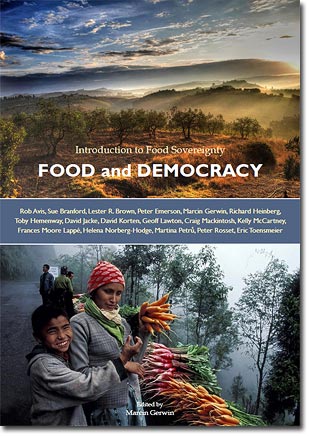 Download the Food and Democracy e-book (1.75mb PDF) |
Regular contributor Marcin Gerwin has put together an excellent collection of articles to create a highly readable e-book focusing on food sovereignty — the necessity for it, the challenges to achieve it, and the solutions associated with it.
Produced by 17 authors from around the world, attacking the same topic and interconnected issues from different angles, this is a great read and is not only a valuable overview of the crisis we face but ships with excellent holistic suggestions for how we can extricate ourselves from it.
Read it, enjoy it, and please do circulate it!
Nice work Marcin! - Craig Mackintosh
Subscribe to:
Posts (Atom)
Featured Post
Dagens demokrati kan ikke redde oss fra klimakrisen
Politikerne tror at løsningen på klimakrisen er å forsterke naturkrisen, ved å grave i filler naturen vår, for å plassere vindkraftverk på h...

-
Introduction in Norwegian: Denne artikkelen av Stefano Serafini ble skrevet som en introduksjon til International Society of Biourbanism ...
-
Hadde nesten ferdig et hjørne med hulkillister i dag, men så fikk jeg somlet meg til å kappe 2 mm for mye. Da var dagen over og rett hjem og...
-
Tenk det, snart skal de til her. Rendalsølen i oktober. Hvordan klarer nordmenn å gå på jobb og feire jul, med sitt sedvanlige forbrukersm...
